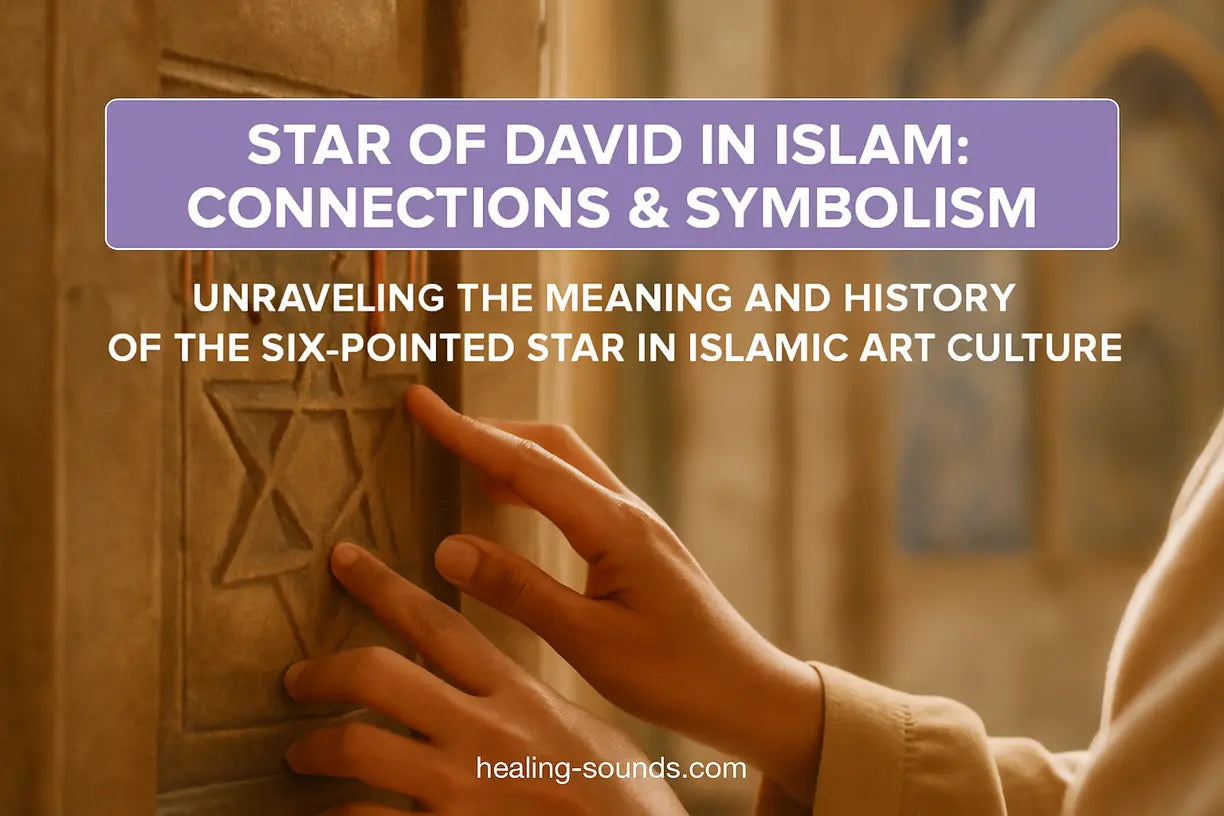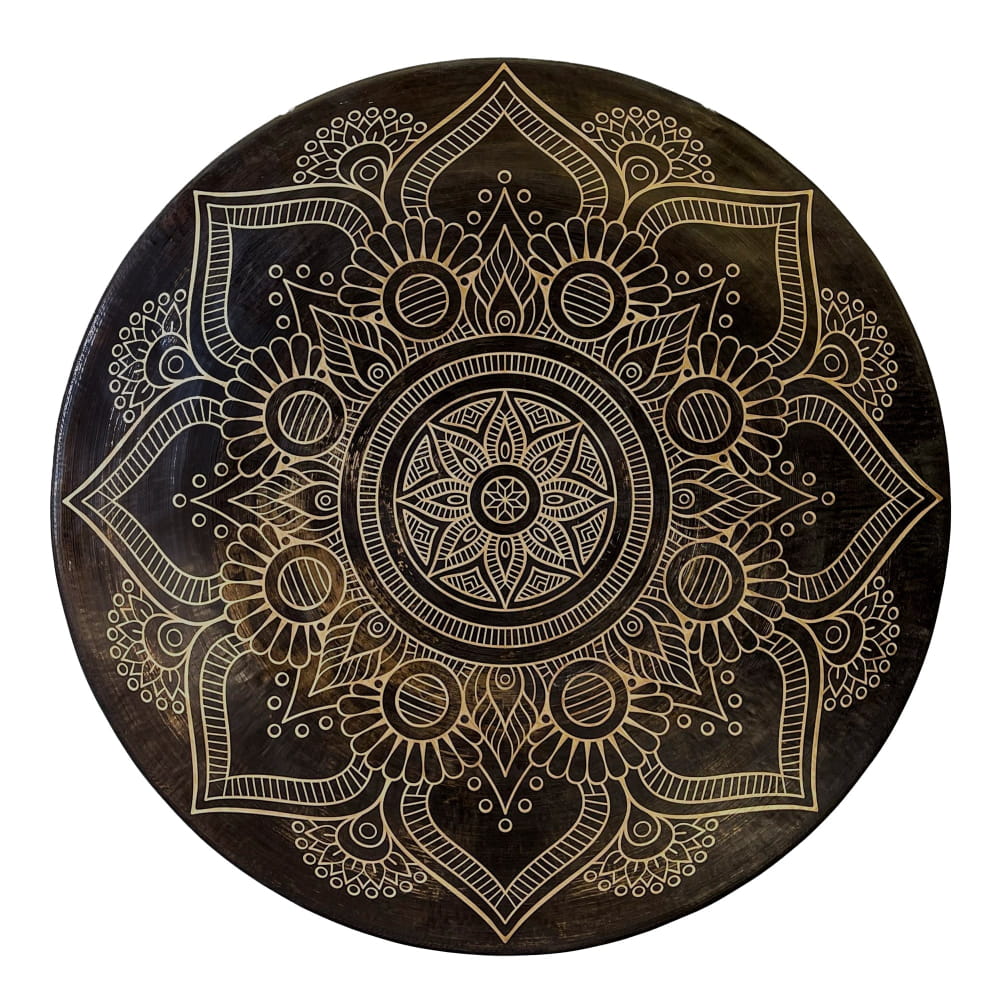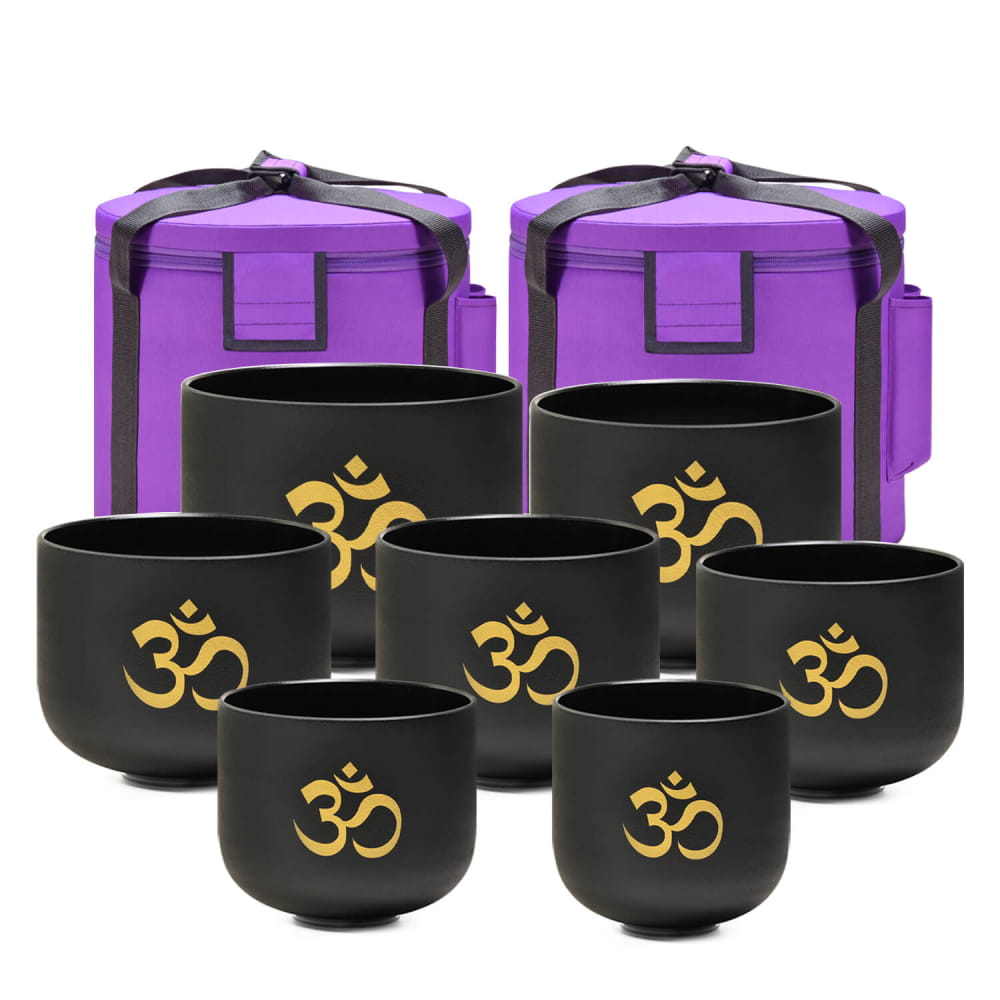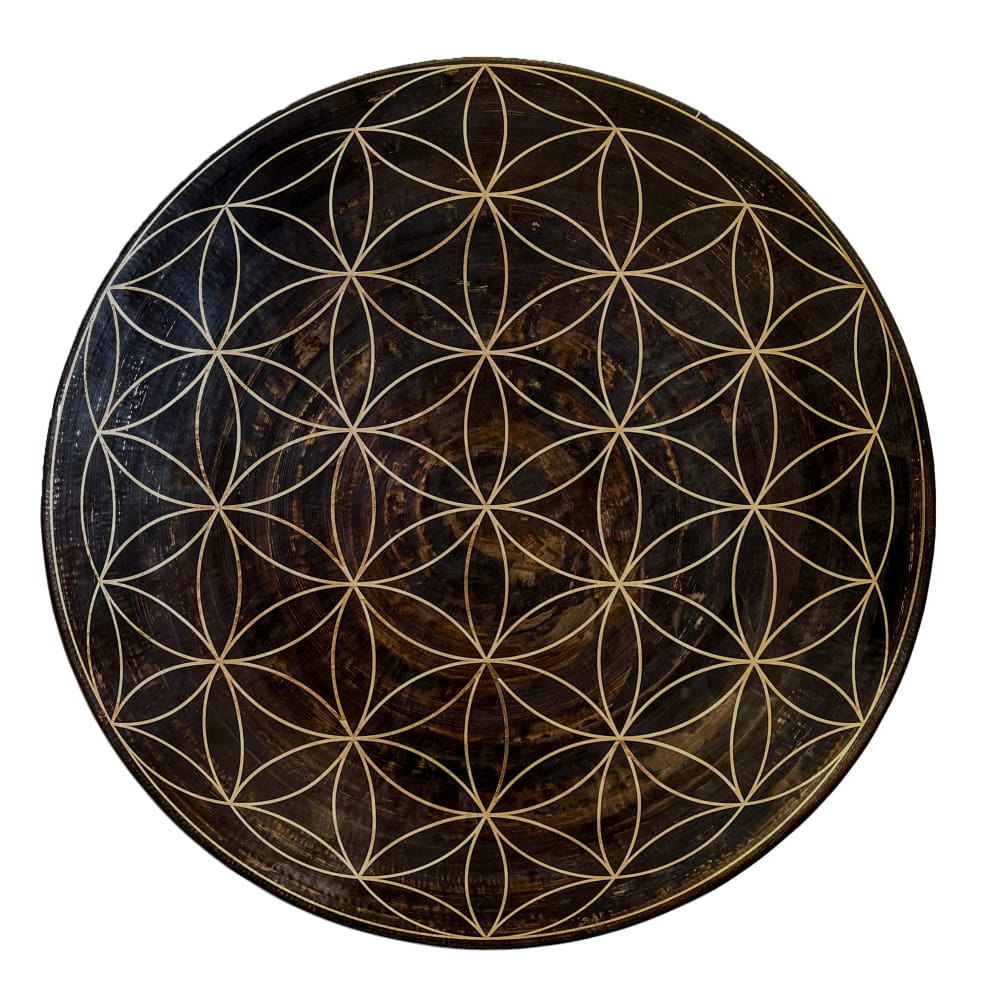Le sceau de Salomon : un lien ancien avec l'islam
Bien avant que l'hexagramme ne soit largement associé au peuple juif, il occupait une place importante dans la tradition et le mysticisme islamiques sous le nom de Khatam Sulayman, ou Sceau de Salomon . Dans l'islam, Salomon (connu sous le nom de Prophète Sulayman) est vénéré comme un roi et un prophète sage et juste, doté par Dieu de pouvoirs extraordinaires. Selon la tradition, le Prophète Sulayman possédait une chevalière magique gravée d'un symbole – souvent représenté par une étoile à six branches – qui lui conférait le pouvoir sur les vents, les animaux et les êtres surnaturels appelés djinns. Ce sceau symbolisait l'autorité divine, la sagesse et le pouvoir de contrôler les mondes visible et invisible. Par conséquent, dans le contexte islamique, l' étoile à six branches n'est pas principalement associée au Prophète David (Dawud), mais à son fils, Salomon. Cette tradition est fondamentale pour comprendre l'histoire indépendante de ce symbole au sein de la culture islamique. Pour plus de contexte historique sur le rôle du prophète Salomon, vous pouvez vous référer à des sources telles que l'entrée de l'Encyclopaedia Britannica sur Salomon .L'étoile à six branches dans l'art et l'architecture islamiques
Motivé par son lien avec le puissant prophète Salomon, l'hexagramme est devenu un motif récurrent dans l'art, l'architecture et l'artisanat islamiques pendant des siècles. Il n'était pas utilisé comme emblème de foi, contrairement au croissant de lune aujourd'hui, mais plutôt comme symbole décoratif et talismanique. Vous pouvez trouver l' étoile de David islamique sur divers objets historiques, notamment :
Vous pouvez trouver l' étoile de David islamique sur divers objets historiques, notamment :- Mosquées et palais : l'étoile était intégrée dans les carreaux de faïence (zellige), les panneaux de bois sculptés et les reliefs en pierre de l'Espagne mauresque à la Turquie ottomane et à l'Inde moghole.
- Pièces de monnaie et drapeaux : Diverses dynasties islamiques, comme les Karamanides en Anatolie, ont utilisé l'étoile à six branches sur leurs drapeaux et leurs pièces de monnaie.
- Manuscrits et amulettes : Le sceau de Salomon était souvent inscrit sur des talismans et dans des manuscrits pour offrir une protection contre le mal et apporter des bénédictions.
Symbolisme de l'étoile de David islamique
Dans la tradition islamique, le symbolisme de l'étoile à six branches, ou Sceau de Salomon, est riche et complexe. Plus qu'un simple élément décoratif, il incarne de profonds concepts spirituels. Les triangles imbriqués sont souvent interprétés comme l'union des contraires – ciel et terre, masculin et féminin, spirituel et matériel – créant une harmonie et un équilibre parfait . Elle représente l'ordre divin et l'interdépendance de toute la création. Regardez cette vidéo pour en savoir plus sur le fascinant parcours de l'étoile à six branches à travers différentes cultures, et notamment sur son rôle dans l'islam. Tout comme le Sceau de Salomon représente un équilibre harmonieux par sa géométrie sacrée, les outils utilisés dans la pratique spirituelle peuvent nous aider à nous connecter à ces principes anciens. Intégrer des objets à signification symbolique peut approfondir notre cheminement vers l'harmonie intérieure.Instrument à percussion Mandala Chau Gong 60 cm
$749.99 $969.99
Apportez la géométrie sacrée et l'art symbolique dans votre espace spirituel avec ce magnifique Mandala Chau Gong, parfait pour la méditation et l'harmonie.
Explorer le produitPerspectives coraniques et savantes
L'une des questions les plus fréquentes concerne ce que le Coran dit de ce symbole. Le Coran fait l'éloge du prophète David (Dawud), le vénérant comme un messager de Dieu à qui le Zabur (Psaumes) a été révélé. Le Coran déclare : « Nous avons certes accordé une grâce à David de Notre part. [Nous avons dit] : “Ô montagnes, récitez avec lui Nos louanges, ainsi que les oiseaux.” Et Nous lui avons rendu malléable le fer. » (Coran 34:10). Cependant, le Coran ne mentionne aucune étoile ni aucun bouclier associé à lui. Le lien entre l'hexagramme et le prophète Salomon provient de traditions islamiques ultérieures, du folklore et d'écoles de pensée mystiques comme le soufisme, qui ont exploré ses significations ésotériques. Les érudits considèrent son utilisation historique dans l'islam comme un phénomène culturel et symbolique plutôt que comme une prescription scripturale.
Interprétations modernes et dialogue interreligieux
À l'ère moderne, l'étoile à six branches est largement et légitimement associée au judaïsme et à l'État d'Israël. Cette forte identification rend son utilisation extrêmement rare dans les contextes islamiques contemporains, car elle peut facilement être mal comprise. Cependant, comprendre son histoire en tant que Sceau de Salomon dans l'Islam est crucial pour favoriser la compréhension interconfessionnelle. Cela révèle que les symboles peuvent avoir des histoires diverses et indépendantes et que nos ancêtres partageaient un ensemble commun de motifs artistiques et spirituels. Reconnaître cet héritage commun permet de construire des passerelles de dialogue et d'apprécier les histoires complexes et entrelacées des grandes traditions spirituelles de notre monde. Cette perspective encourage une exploration respectueuse de tous les symboles sacrés, reconnaissant leur pouvoir de nous connecter au divin et les uns aux autres. L'exploration de ces liens peut faire partie intégrante de toute pratique spirituelle, y compris la guérison par le son et la méditation, qui utilisent souvent des symboles anciens pour concentrer l'esprit.
Cependant, comprendre son histoire en tant que Sceau de Salomon dans l'Islam est crucial pour favoriser la compréhension interconfessionnelle. Cela révèle que les symboles peuvent avoir des histoires diverses et indépendantes et que nos ancêtres partageaient un ensemble commun de motifs artistiques et spirituels. Reconnaître cet héritage commun permet de construire des passerelles de dialogue et d'apprécier les histoires complexes et entrelacées des grandes traditions spirituelles de notre monde. Cette perspective encourage une exploration respectueuse de tous les symboles sacrés, reconnaissant leur pouvoir de nous connecter au divin et les uns aux autres. L'exploration de ces liens peut faire partie intégrante de toute pratique spirituelle, y compris la guérison par le son et la méditation, qui utilisent souvent des symboles anciens pour concentrer l'esprit.Outils d'exploration spirituelle
$1,499.00
Incorporez des symboles sacrés dans votre guérison sonore avec cet ensemble de bols chantants en cristal ornés d'OM, idéal pour une résonance spirituelle profonde. En savoir plus ➔
$749.99
$969.99
Explorez les modèles anciens et la signification spirituelle dans votre pratique avec cet exquis Chau Gong Fleur de Vie pour une méditation profonde. En savoir plus ➔
Conclusion : Un symbole de patrimoine partagé
Le parcours de l' étoile de David en islam nous rappelle avec force que les symboles sont dynamiques, leur signification étant façonnée par la culture, le temps et la foi. Si elle est aujourd'hui un emblème du peuple juif, son histoire, en tant que Sceau de Salomon, offre un aperçu fascinant d'un passé où les symboles ont transcendé les frontières religieuses, représentant des idées communes de puissance divine, de protection et d'harmonie cosmique. En comprenant cette riche histoire, nous pouvons dépasser les divisions et célébrer les liens complexes qui unissent nos héritages spirituels. S'approprier cette connaissance nous permet d'apprécier les symboles sacrés non pas comme des murs qui divisent, mais comme des fenêtres sur notre quête commune de sens.Questions fréquemment posées sur l'étoile de David dans l'Islam
Le Coran tient le prophète David (Dawud) en haute estime, le considérant comme un prophète et un roi vertueux. Il est mentionné comme ayant reçu la sagesse divine et le Zabur (le Livre des Psaumes). Cependant, le Coran ne mentionne aucun symbole d'étoile ou de bouclier en son nom.
L'étoile de David est avant tout un symbole du judaïsme et de l'identité juive. Cependant, la forme hexagramme elle-même est un symbole ancien qui est apparu dans diverses cultures et religions à travers l'histoire, notamment dans la tradition islamique sous le nom de Sceau de Salomon.
Oui, tout le monde peut le porter, mais il est primordial de comprendre et de respecter sa signification profonde pour le peuple juif. Pour eux, c'est un symbole de foi, d'héritage et d'identité. Le porter sans comprendre ce contexte peut être perçu comme une banalisation de sa signification.
En arabe, le nom David est Dawud (داود). Comme en hébreu, ce nom signifie « bien-aimé ».
Les empires et les artistes islamiques utilisaient l'étoile à six branches principalement en raison de son association avec le prophète Salomon (Sulayman), considéré comme le « sceau de Salomon ». Elle était considérée comme un puissant talisman de protection et un symbole d'autorité et de sagesse divines. Elle était également appréciée pour sa beauté géométrique dans l'art décoratif.







